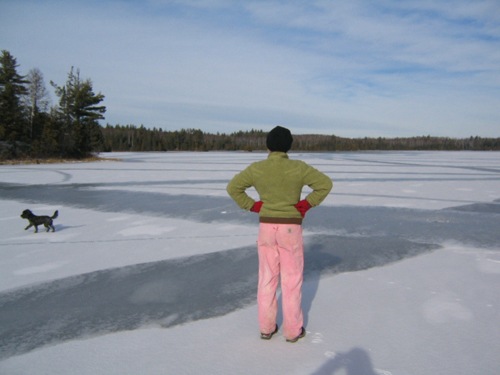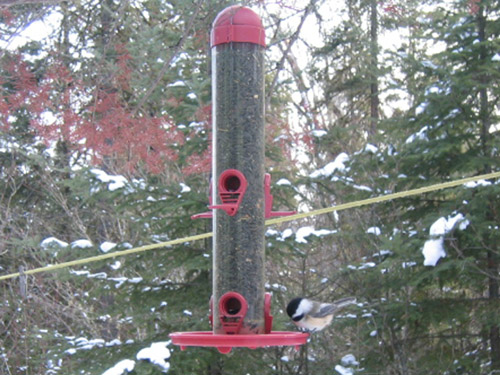11/20/06 – Sunny days this November have thus far proved elusive. However for the past two days, we’ve been treated to clear, sunny skies and temperatures hovering around freezing. I’ve been routinely taking the dogs down to the landing to check the condition of the lake, anticipating late-season skating or early skiing. Today was the first day that Sawbill’s ice looked solid enough to test. Using an axe, I chopped a few holes to test for thickness in different areas. 4″ near the shore and 3″ further out was more than enough to hold my body weight. Skis are propped up outside of all the Sawbill dwellings in preparation for winter to get underway.

Jessa surveys the ice being made.
The bird-feeders have also been a flurry of pre-winter activity. Pine and evening grosbeaks, blue and grey jays, and the common black-capped and boreal chickadees are out in force. We’ve been filling the bird-feeders just about everyday. For the chickadees, supplemental sunflower seeds found at feeders can raise their insulating fat deposits by 4%.

Chickadees regularly cache food sources in spruce trees and visit each feeder with marked regularity. To maintain their body temperature at its normal level of 108 degrees Fahrenheit, the chickadees must consume amazing quantities of food. Their wings beat at 30 strokes per second and their nestlings require feedings anywhere from 6 to 14 times per hour. Thus searching for food burns almost as many calories: a catch-22 for the little guys. – Frosty
